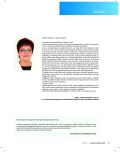Geriatric patient in emergency department.
Authors:
prof. MUDr. Eva Topinková 1; CSc.MUDr. Marie Berková, Ph.D. 1,2
Authors‘ workplace:
Geriatrická klinika 1. LF UK a VFN Praha
1; LDN FNKV Praha
2
Published in:
Geriatrie a Gerontologie 2016, 5, č. 2: 79-85
Category:
Original Article/Study
Overview
Geriatric patients in emergency department (ED) represent 40 % of all admissions and 6.5 % are over 80 years of age. Up to two thirds are acutely admitted to hospital and part of those discharged presents repeatedly in ED. Increasing medical complexity of older persons and concurrent social care needs mean that – in addition to the treatment of acute clinical condition – other geriatric syndromes have to be assessed and diagnosed. These conditions may play a key role in decision-making process regarding hospital admission, and negatively influence health care oucomes and health services use.
In the paper two assessment tools are presnetd – ISAR and TRST – designed primarily for stratification of geriatric patients according their risk of negative health outcomes (mortality, disability, repeated ED admissions, length of hospital stay, rehospitaization). Both tools were piloted at general medicine ED at General Faculty Hospital in Prague. We confirmed their feasibility and validity for risk prediction in the Czech health care system. Based on literature data we assume that targeted geriatric intervention to high risk patients (e.g. geriatric consultation in hospitalized) and management of health and social community service provision may reduce ED visits and hospital readmissions. Future research should focus on evidence-based benefit of interventions.
KEYWORDS:
emergency department – geriatric patient – geriatric risk stratification – ISAR – TRST
Sources
1. Biese K, Roberts E, Kizer JS, et al. Portal of Online Geriatric Education (POGOe): Caring for Elderly Patients in the Emergency Department: An interactive lecture series POGOe web site. http://www.pogoe.org/productid/20964.
2. American College of Emergency Physicians, The American Geriatrics Society, Emergency Nurses Association, and the Society for Academic Emergency Medicine. The Geriatric Emergency Guideline 2013. http://www.saem.org/education/geriatric-ed-guidelines
3. Aminzadeh F, Dalziel WB. Older adults in the emergency department: a systematic review of patterns of use, adverse outcomes, and effectiveness of interventions. Ann Emerg Med 2002; 39 : 238–247.
4. Samaras N, Chevalley T, Samaras D, et al. Older patients in the emergency department: a review. Ann Emerg Med 2010; 56 : 261–269.
5. Banerjee B, Conroy S, Cooke MW. Quality care for older people with urgent and emergency care needs in UK emergency departments. Emerg Med J 2013; 30 : 699–700.
6. Carpenter CR, Shah MN, Hustey FM, et al. High yield research opportunities in geriatric emergency medicine: prehospital care, delirium, adverse drug events, and falls. J Gerontol Med Sci 2011; 66A: 775–783.
7. Gray LC, Peel NM, Costa AP et al. Profiles of older patients in the Emergency Department: Findings from the interRAI multinational ED study. Ann Emerg Med 2013; 62 : 467–474.
8. Costa AP, Hirdes JP, Heckman GA, et al. Geriatric syndromes predict postdischarge outcomes among older emergency department patients: findings from the interRAI Multinational Emergency Department Study. Acad Emerg Med 2014; 21(4): 422–433.
9. Graf CE, Zekry D, Giannelli S, Michel JP, Chevalley T. Efficiency and applicability of comprehensive geriatric assessment in the emergency department: a systematic review. Aging Clin Exp Res 2011; 23(4): 244–254.
10. Pines J, et al. National Trends in Emergency Department Use, Care Patterns, and Quality of Care of Older Adults in the United States. J Am Geriatr Soc 2013; 61 : 12–17.
11. Topinková E, Berková M, Novotný Z, Yamada Y. Comparison of two emergency department screening tools ISAR and TRST to predict adverse outcomes after ED discharge. Eur Ger Med 2014, 5 (Suppl. 1) S151.
12. Sinha SK, Bessman ES, Flomenbaum N, et al. A systematic review and qualitative analysis to inform the development of a new emergency department-based geriatric case management model. Ann Emerg Med 2011; 57 : 672–682.
13. Graf CE, Giannelli SV, Herrmann FR, et al. Can we improve the detection of old patients at higher risk for readmission after an emergency department visit? J Am Geriatr Soc 2012; 60(7): 1372–1373.
14. Costa AP, Hirdes JP, Bell CM, et al. Derivation and validation of the detection of indicators and vulnerabilities for emergency room trips scale for classifying the risk of emergency department use in frail community-dwelling older adults. J Am Geriatr Soc 2015; 63(4): 763–769.
15. McCusker J, Bellavance F, Cardin S, et al. Detection of older people at increased risk of adverse health outcomes after an emergency visit: The ISAR screening tool. J Am Geriatr Soc 1999; 47 : 1229–1237.
16. Meldon SW, Mion LC, Palmer RM, et al. A brief risk-stratification tool to predict repeat emergency department visits and hospitalizations in older patients discharged from the emergency department. Acad Emerg Med 2003; 10(3): 224–232.
17. McCusker J, Verdon J, Vadeboncoeur A, et al. The elder-friendly emergency department assessment tool: development of a quality assessment tool for emergency department-based geriatric care. J Am Geriatr Soc 2012; 60(8): 1534–1539.
18. Carpenter CR, Platts-Mills TF. Evolving prehospital, emergency department, and “inpatient” management models for geriatric emergencies. Clin Geriatr Med 2013; 29 : 31–47.
19. Hwang U, Morrison RS. The geriatric emergency department. J Am Geriatr Soc 2007; 55 : 1873–1876.
20. Yuen TM, Lee LL, Or IL, et al. Geriatric consultation service in emergency department: how does it work? Emerg Med J 2013; 30 : 180–185.
Labels
Geriatrics General practitioner for adults Orthopaedic prostheticsArticle was published in
Geriatrics and Gerontology

2016 Issue 2
Most read in this issue
- Normotense hydrocephalus as a cause of deterioration of dementia in a geriatric patient
- Self-sufficiency and its evaluation in the context of our legislative and practice, especially in terms of care allowance assessment
- Geriatric patient in emergency department.
- Elderly patients with colon cancer: a medical oncologist’s perspective.
